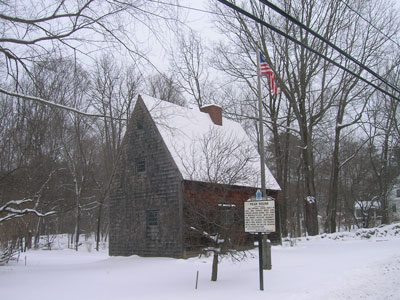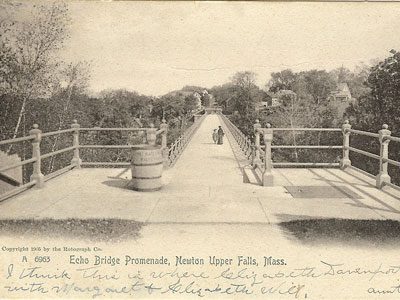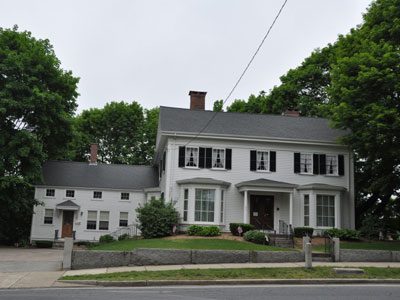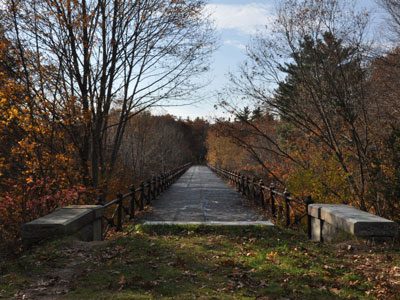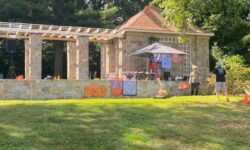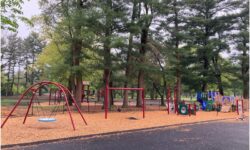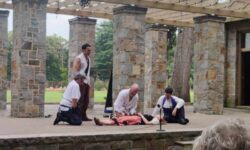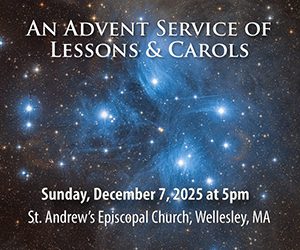By Amelia Tarallo
Hometown Weekly Special Correspondent
In the wake of Thanksgiving’s stories of Pilgrims, Native Americans, colonies, and exploration, readers in Hometown Weekly’s communities may have found themselves contemplating their home’s place in history.
And why not?
Plymouth and Salem are no more than an hour away. Boston, Lexington, and Concord are even closer. Much of America’s important early history was written a mere stone’s throw away from our quiet communities.
But what of the stories that took place in our own backyards?
For those in the know, the MetroWest communities that make up Hometown Weekly’s readership present a veritable trove of opportunities for the historically-inclined to broaden their horizons - not to mention their perceptions of home.
Here are a number - but by no means all - of the sights to be seen just around the corner.
Dover-Sherborn

Dover’s Benjamin Caryl House looks as stately today as it did when it was built around the time of the American Revolution.
Photos by Stephen Press
Benjamin Caryl House
107 Dedham Street, Dover
Built around the years of the Revolutionary War, the Benjamin Caryl house remains a fantastic example of 18th century architecture and living. Reverend Benjamin Caryl, the first minister of the Springfield Parish, built the house around 1774. Caryl served as minister for 50 years and was known as a prominent community member. The house remained in the Caryl family’s possession until 1928, when it was given to the Dover Historical Society. 243 years later, the house closely resembles what it probably looked like when it was first built. Some of the objects decorating the house today belonged to the Caryl family. Others, such as the coverlet on the four posted bed, have been carefully replicated to resemble those that would have been found in the house when the reverend was living in it.

The expertly-curated Sawin Museum, home of the Dover Historical Society, houses an impressive collection of artifacts and exhibits.
Photos by Stephen Press
The Sawin Museum
80 Dedham Street, Dover
The museum was completed in 1907 with a generous donation from Benjamin Nelson Sawin and his wife, Sarah Eudora Sawin. Since then, it has become a fantastic local history museum. There are permanent exhibits as well as the occasional temporary exhibit. Most recently, the Sawin displayed a wonderful World War I exhibit. The Sawin Museum is open Saturday afternoons from 1-4 p.m. during the spring and fall, and also by appointment.
Medfield
Peak House
347 Main Street
One of the most iconic landmarks in Medfield is the Peak House. The original house is believed to have been built in 1668, and was one of the many dwellings burned down during King Philip's War. The house standing on Main Street today was built in 1711. Key features include the steep roof and the stained glass windows brought overseas from England. It is one of the oldest examples of post-Medieval architecture in the United States.
The Dwight-Derby House
7 Frairy Street
Located across from Meetinghouse Pond sits the Dwight-Derby House. Named after two of the families who once inhabited it, the Dwight-Derby is one of the oldest houses in Medfield, having been built in 1697. The house was the childhood home of George H. Derby, America’s first satirical writer. Writing under the pen name John P. Squibob, Derby wrote satirical articles for California newspapers. Despite renovations and additions throughout the years, the house remains a fantastic example of classic colonial architecture. The house will be open for visitors on the evening of December 1 from 6:30 until 9:00.
Needham
Echo Bridge
Walk from Reservoir Street
This historic bridge stretches between Needham and Newton, over the Charles River, as part of the Sudbury Aqueduct. Though the aqueduct is no longer in use, the bridge has become a popular tourist attraction. Standing on it, visitors are able to witness the beautiful view of Hemlock Gorge. At the time of its creation in 1877, Echo Bridge was one of the longest masonry bridges in the United States. Those visiting Echo Bridge will notice the especially powerful echo (the bridge was, in fact, named for the phenomenon), though there have been debates as to exactly why the echo is so powerful.
Revolutionary War Monument
Needham Cemetery, Parish Road
One of Needham's many war monuments stands in Needham Cemetery.
Erected in 1851, the stone obelisk pays tribute to five men who died during the Revolutionary War on their way to the Battle of Lexington and Concord. Inscribed on the monument are the names of each of the men, the date they died, and the quote “For Liberty they died,” reminding those who read it the great sacrifice these men made for the sake of establishing a new republic.
The Upper Falls Schoolhouse
1147 Central Avenue
Also known as the Little Red Schoolhouse is one of the many one-room schoolhouses built in Needham during the 1840s. Prior to its construction, students would attend classes at the home of Captain Robert Fuller. Like most one room schoolhouses at the time, there would be students of all ages learning as one class. There were multiple schoolhouses in Needham during the 1800s, where students attended from each neighborhood. The Upper Falls school was used until 1869 when it was replaced by the Eliot School. The little red school was moved to its currently location in front of Newman Elementary School in 2005. Each year, Needham’s third grade students participate in “1850 Schoolhouse Day,” during which they spend one day immersed in the a day in the life of a student from 1850. Today, the schoolhouse is available to rent for functions.
Walpole
Deacon Willard Lewis House
33 West Street
The beautiful Deacon Willard Lewis House was built in 1827 by Horatio Wood. It was later bought by Harlow Lawrence, who owned the nearby mill. In 1863, Deacon Willard Lewis purchased both the house and the mill. Today, it houses the Walpole Historical Society. It is open Saturday afternoon from two until four.

Designed by a student of Frederick Law Olmsted, Bird Park is still a feast for the eyes nearly 100 years after its construction.
Bird Park
Polley Lane, East Walpole
Bird Park is now owned and maintained by the Trustees of the Reservation. The park was paid for by Charles Sumner Bird and his wife in memory of their son, Francis William, who was a victim of the 1918 influenza epidemic. As a member of the Bird family, Charles grew up spending much of his time outside on his family’s large estate and was known for his love of the outdoors. The park was designed by John Nolen, a student of Frederick Law Olmsted, the designer of famous parks and campuses around the country. Nolen himself was the city planner who designed the parks in Madison, Wisconsin and the University of Wisconsin campus. During the summer, Bird Park hosts a variety of activities including plays, music performances, and even weddings. On Sunday, December 3, the Trustees of the Reservation will host a full moon stroll around the park.
Wellesley
The Katharine Lee Bates House
70 Curve Street
The former home of Katharine Lee Bates, a beloved professor at Wellesley College and poet. She is famously known for her patriotic poem “America the Beautiful,” published in 1893. The gorgeous shingle-style house was built by Bates in 1907. During her time there, Bates lived with her partner, Katherine Colman, a Wellesley economics professor, and often invited faculty and students over for social events. Today, the house serves as an Airbnb.
Sudbury Aqueduct
Hunnewell Street at the Needham town line
Constructed between 1875 to 1878, the Sudbury Aqueduct was an architectural marvel of its time. The aqueduct runs through Framingham, Sherborn, Natick, Needham, Newton, and Wellesley. During its century-long use, the aqueduct carried 90 million gallons of water. The area stopped using the Sudbury Aqueduct in 1978, though it had been maintained so that it can be used in emergency situations. Today, visitors are welcomed to hike and bike alongside the aqueduct via trails opened by the Massachusetts Water Authority.
Wellesley College
106 Central Street
Founded in 1870 by Pauline and Henry Durant, Wellesley has become one of the best liberal arts colleges in the country. Wellesley is one of the surviving Seven Sisters, a collection of esteemed all-women's colleges. Others include Mount Holyoke, Smith, Barnard, and Bryn Mawr. Wellesley has been the alma mater of many famous faces, such as author Nora Ephron, journalist Diane Sawyer, and Secretaries of State Madeline Albright and Hillary Rodham Clinton. Wellesley is also the home of the Davis Museum, which houses an impressive range of art from all over the world and all different time periods.
Westwood
Fisher Schoolhouse
830 High Street
Inside the schoolhouse are chalkboards and rows of wooden desks. Missing is the large stove that would have heated the classroom, now replaced by a hot air furnace. However, the Fisher schoolhouse still resembles what it looked like when it was built in 1845. Even the paint colors are the same. Efforts to restore the schoolhouse were successfully completed in 2000. It now houses the Westwood Historical Society.The schoolhouse is open the first Sunday of every month from 2-4 in the afternoon.

Just off of High Street (Route 109) in Westwood sits Oven Mouth, the entrance to a cave (now destroyed) where King Philip’s raiders once hid.Photo by Shelly Santaniello
Oven Mouth
High Street and Lake Shore Drive
Marked on High Street is the Oven Mouth. Also known as the Devil's Oven, it is a large opening in a rock formation. The mouth of the formation was once the entrance to a cave. The cave is believed to have been the hideout for Native Americans during King Philip's War. Unfortunately, the cave was destroyed during road construction in the 1950s. It nonetheless remains a reminder one of the bloodiest conflicts on New England soil.





